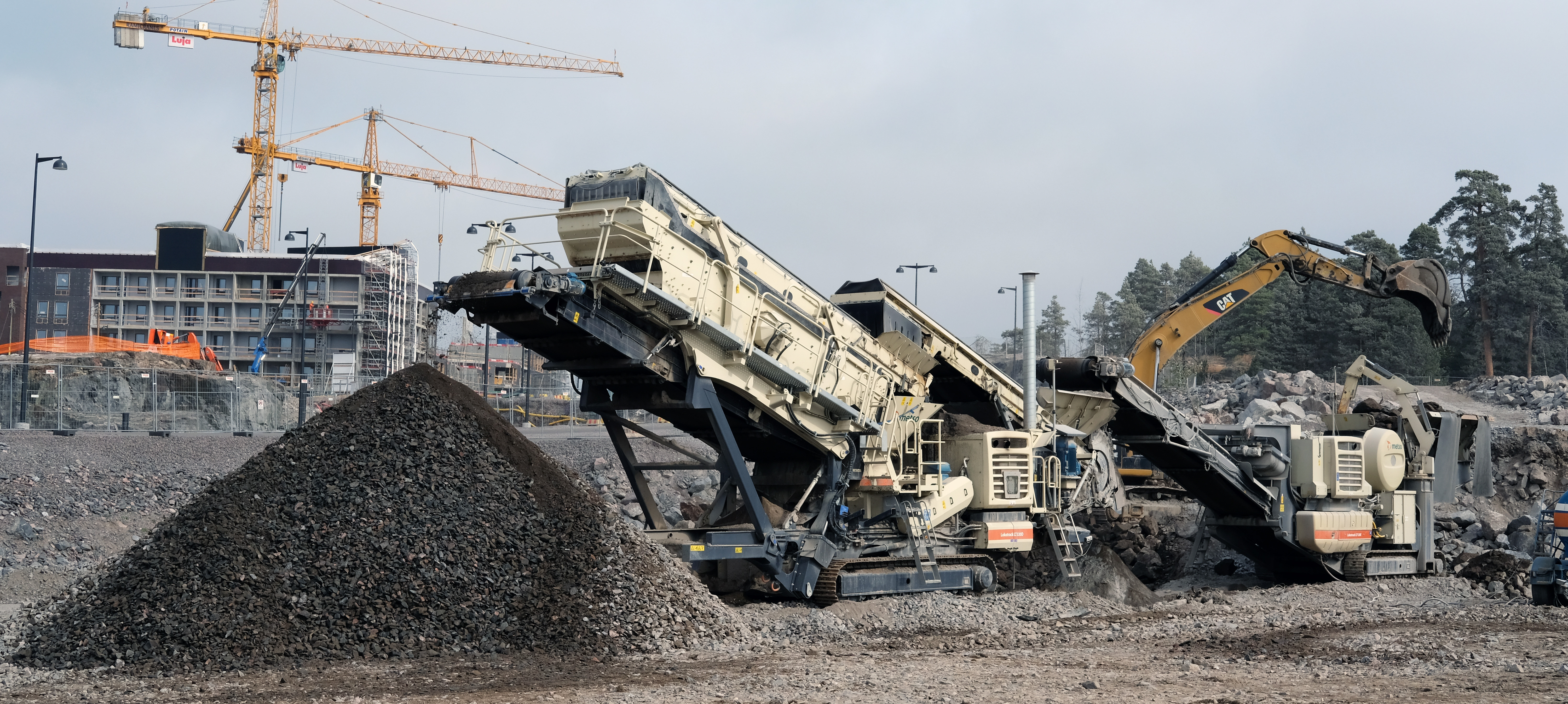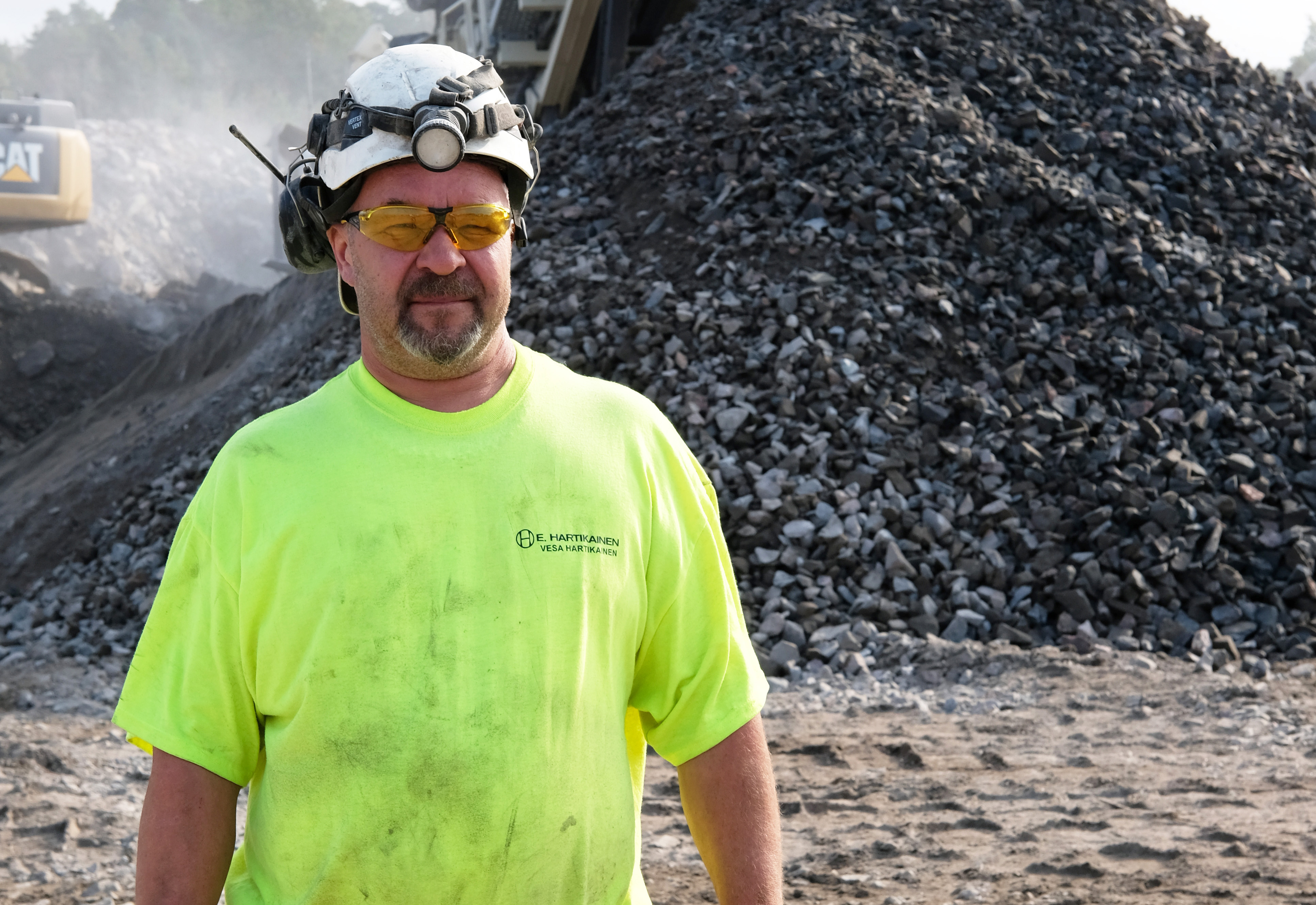Furthermore, due to the proximity of an urban area, crushing was only allowed for eleven hours per day, from 7 am to 6 pm. To eliminate dust, high pressure water spraying was used in the double-stage plant throughout the project.
Most of the rock (215,000 tons) was crushed for use as compacting material in the construction of the Koirasaari and Stansvik beachfront residential areas. Lokotracks were also used to make 12,500 tons of 100–200 mm marine ballast to support embankments. E. Hartikainen completed the project for Boskalis Terramare.
Approximately 3,500 tons of stone crushed per day
Due to the urgency of the project, E. Hartikainen used two double-stage plants. A little over half of the total volume crushed was processed with a brand new Lokotrack® LT120E™ jaw crusher and a LT330D crushing and screen plant. Around 3,500 tons of stone were crushed each day.
“There is always some running in and fine-tuning involved when using a new machine. All in all, the new Lokotracks have been highly functional. Having a steady feed would surely increase our capacity – in this project, the exceptionally high feed size slowed down the work,” says Vesa Hartikainen, who is E. Hartikainen’s crushing plant site manager.
Some of the feed had to be broken down before feeding it into the LT120E crusher operating with the 120 mm setting. The LT330D’s crusher was set at 80 mm.
“The combination of diesel and electrical power clearly reduces fuel consumption. We were able to achieve a consumption level of some 43 liters for the entire double-stage chain. The older LT300GP, which was used alongside the new machines, consumed more fuel than the new model, even though its output was 20–30% lower,” Vesa Hartikainen continues.


